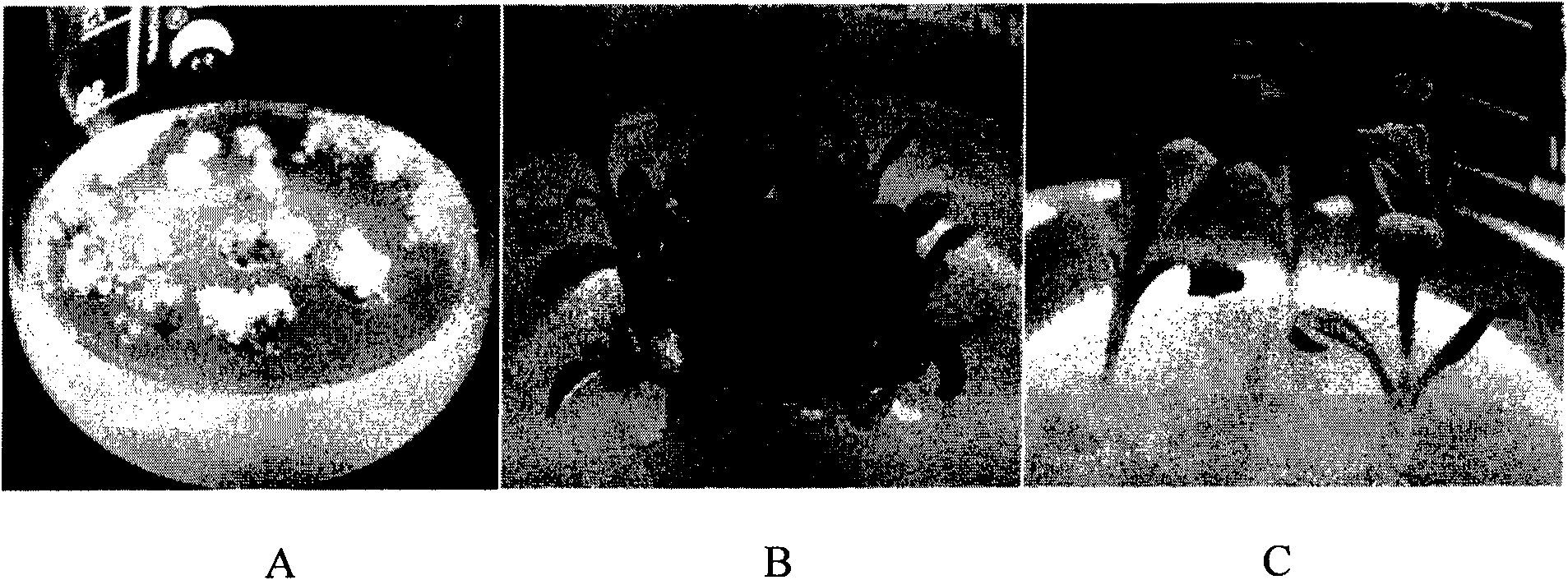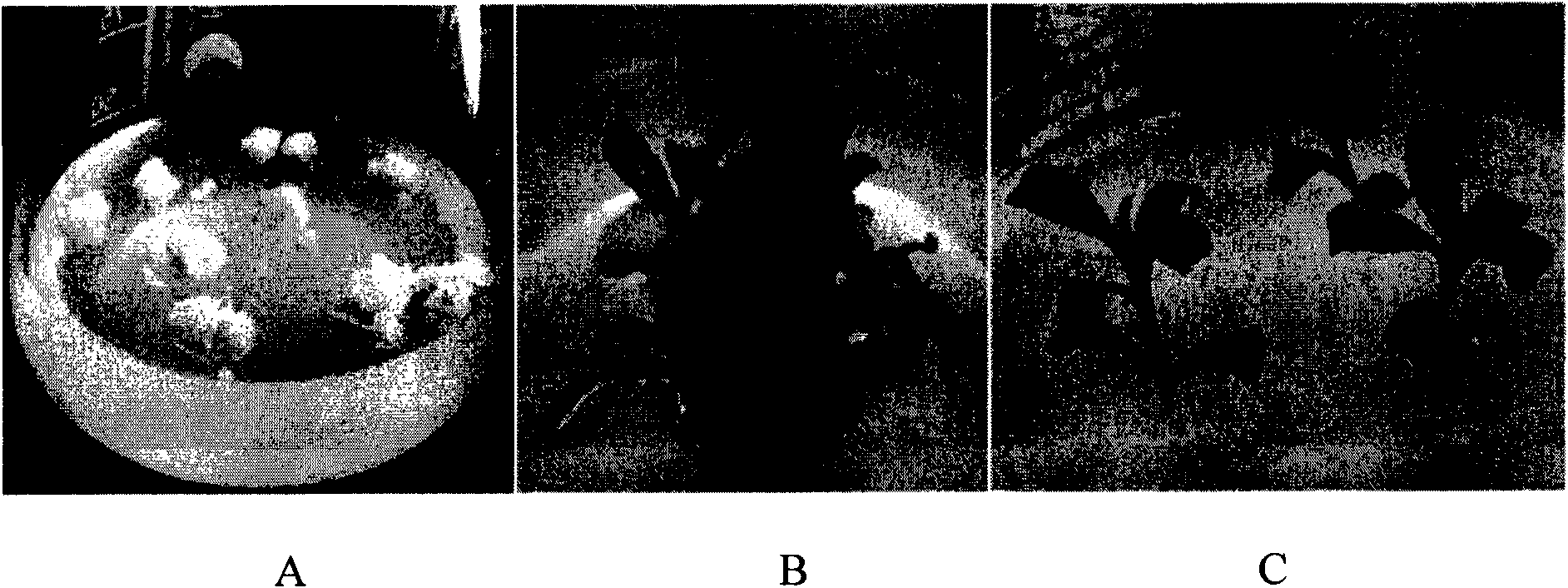Method for preparing high-frequency regeneration plant of pink
A technology for regenerating plants and dianthus, applied in the field of plant biology
- Summary
- Abstract
- Description
- Claims
- Application Information
AI Technical Summary
Problems solved by technology
Method used
Image
Examples
Embodiment 1
[0081] Embodiment 1. obtain the protoplast of carnation and Chinese carnation
[0082] Carnation (Dianthus caryophyllus, species is Tuareg, red flower) and Chinese carnation (Dianthus chinensis, species is D. Versicolor Fish ex Link, also known as Dianthus xingan) after amplification and propagation of test tube seedlings as starting materials, taken The newly proliferated top three pairs of stretched leaves are wilted for a short time, and the lower epidermis is gently torn off with tweezers or cut into thin strips with a width of about 1-1.5mm with a scalpel, and placed in CPW salt with 0.7mol / L mannitol The plasmolysis solution (pH 5.6) was separated for 1-1.5h, and then replaced with a filter-sterilized enzymatic hydrolysis solution [the composition of the enzyme solution was 2% cellulase (Cellulase Onozuka R-10), 0.5% isolated enzyme (Macerozyme R- 10), 0.5mol / L mannitol was dissolved in CPW salt solution]. Put it in a 24°C incubator for 12-14 hours in the dark for enzym...
Embodiment 2
[0085] Example 2. Protoplast culture of regenerative cells
[0086] Place an appropriate amount of protoplasts into six sterile glass petri dishes with a diameter of 6 cm, and inject 2 ml of liquid culture solution into each petri dish, so that the density of protoplasts is 2.5×10 5 cells / ml; seal with tape (Parafilm), and carry out liquid shallow layer dark culture (24°C), the medium is modified KM8p (KM8p+0.5mg / L 2,4-D+0.5mg / L NAA), culture 4 -After 5 days, part of the protoplasts began to grow walls, most of the cells were oval, and the regenerative cells could be seen to divide for the first time after 7 days of culture.
[0087] At this time, the division frequency of regenerative cells of Carnation was 6.7%, and the division frequency of regenerative cells of Chinese Dianthus was 5.8%. When cultured for 10 days, the division frequency of regenerative cells of Carnation reached 24.6%, and that of Chinese Dianthus reached 21.4%.
Embodiment 3
[0088] Example 3. Cultivate regenerated plants
[0089] During the cultivation process, 0.3-0.5ml of fresh sterile culture medium should be added every 10 days to maintain normal osmotic pressure and make the dividing cells continue to divide. When a small cell mass of 8-32 cells is formed, it should be added in time 0.5ml liquid culture medium with reduced osmotic pressure (MS culture fluid+1mg / L2,4-D+0.2mg / L NAA containing 1% (weight ratio) glucose and 2% (weight ratio) sucrose) 1-2 times, Thereafter, the regenerative cells of the protoplast can develop towards the direction of embryogenic cells.
[0090] When cultured to 95-100 days, you can see a large number of milky white, compact structure of small calli visible to the naked eye, use a glass pipette to suck them together to add 0.5mg / L BA and 0.2mg / L NAA, 0.2% Gelrite solidified On the MS proliferation medium, after 5-6 weeks of culture, when the callus grows to a diameter of about 3-4mm, the callus piece of this size ...
PUM
 Login to View More
Login to View More Abstract
Description
Claims
Application Information
 Login to View More
Login to View More - R&D
- Intellectual Property
- Life Sciences
- Materials
- Tech Scout
- Unparalleled Data Quality
- Higher Quality Content
- 60% Fewer Hallucinations
Browse by: Latest US Patents, China's latest patents, Technical Efficacy Thesaurus, Application Domain, Technology Topic, Popular Technical Reports.
© 2025 PatSnap. All rights reserved.Legal|Privacy policy|Modern Slavery Act Transparency Statement|Sitemap|About US| Contact US: help@patsnap.com


